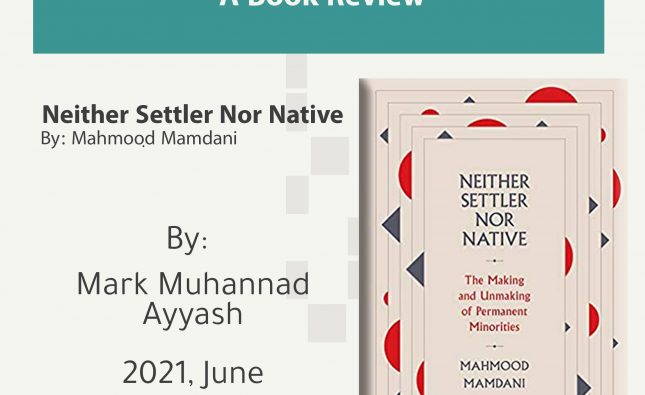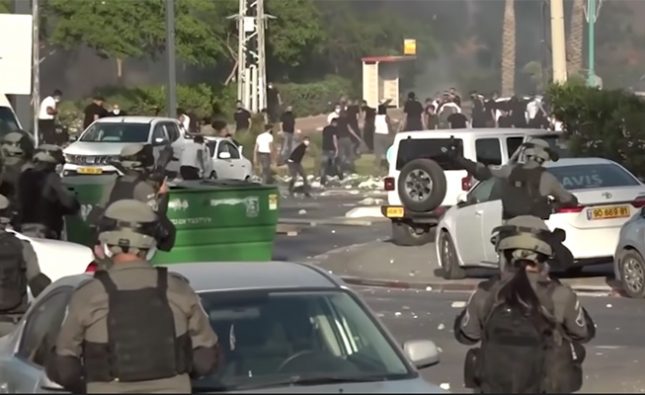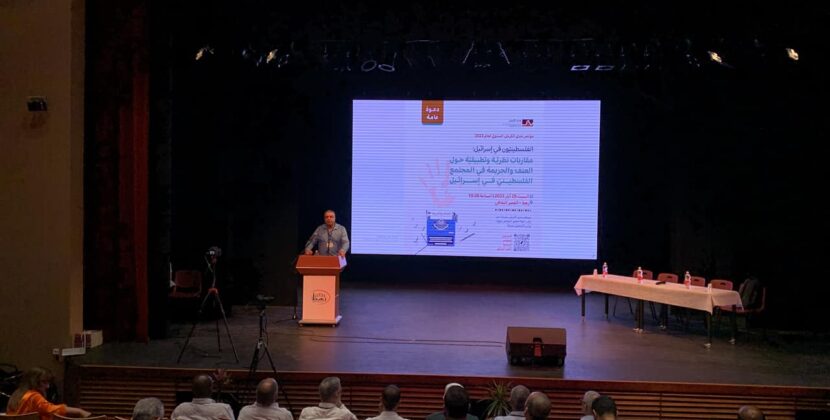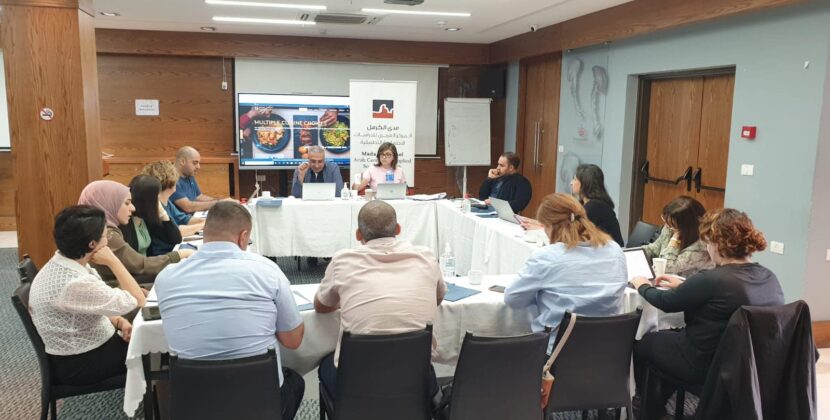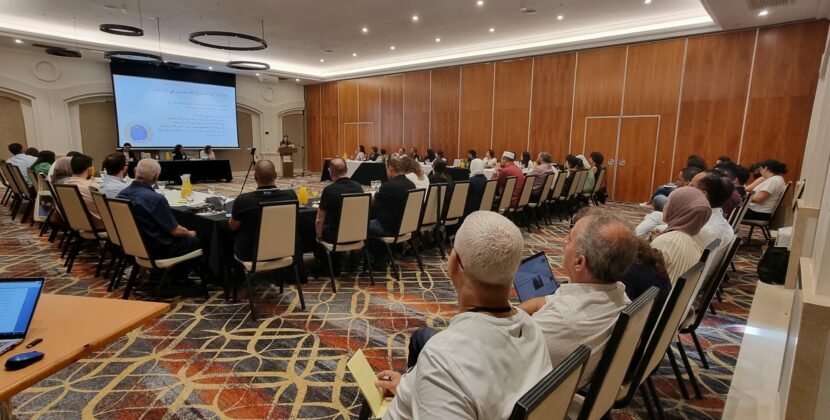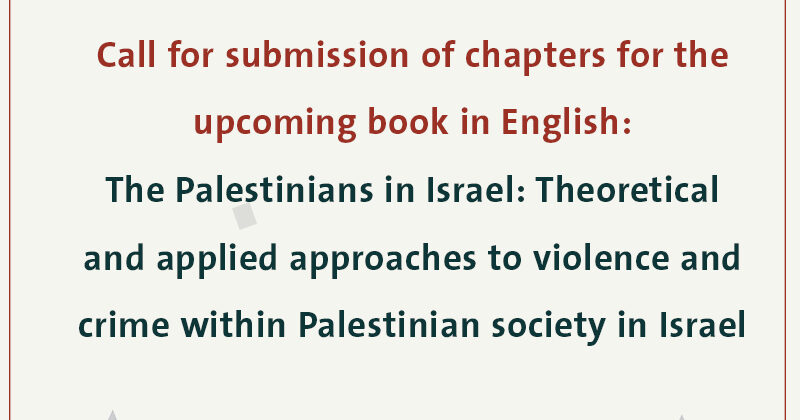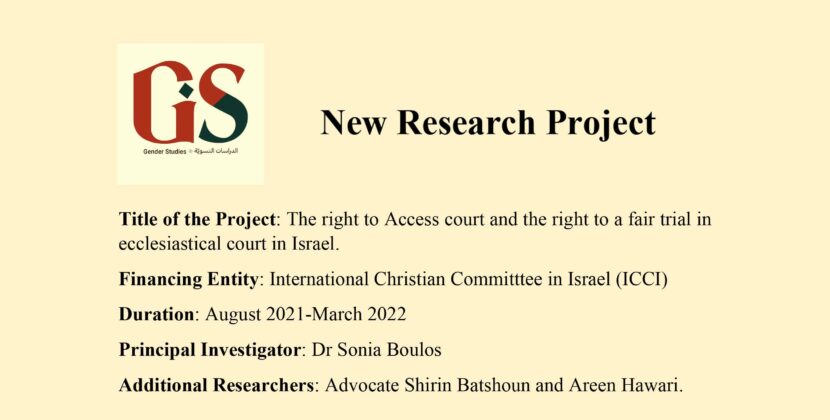The “Israel Studies Program” in Mada al-Carmel — Arab Center for Applied Social Research
in Haifa, issued a new file, No. 8, of the Mada files series. The focus of this file is “Readings in the Issue of the Displaced,” and includes four research papers.
The first paper is entitled, “Do we know the number of internally displaced Palestinians? Complications in definition and number” by Ameed Sa’abna. The central question in this study addresses the number of internally displaced Palestinians in Israel at the beginning of the twenty-first century. The study asks specifically: Do we know the number of displaced people today? In trying to answer this question, the study initially reviewed the scarce literature published on the displaced, noting that a formal census of the displaced has not been carried out yet. The study then reviewed recent surveys, which tried to estimate the size of the displaced groups, particularly the socio-economic survey implemented by the Galilee Society.
The paper discusses the definition used by this survey, which stipulates that the displacement is inherited through the male and not female offspring, and how this definition affects the number of the displaced; the phenomenon it intends to measure. The characteristics of this effect are defined more clearly, when we review and compare this socio-economic survey with the results of Mada al-Carmel’s survey, which used another definition. The study compares the two definitions and the consequences on the size of the group of displaced as a result.
The author suggests that the surveys need to ask about the complete family history regarding displacement, that is, inquire about the displacement status of the individual, parents and grandparents from the paternal and maternal sides, as well as other questions about the destroyed town of origin and year of displacement. The complete history of displacement of the family provides the researchers and those interested great flexibility in defining the borders of the displaced group. This information also enables the use of alternative definitions for official identification.
The second paper is entitled “Internally Displaced Palestinians: A Comprehensive Reading” by Manar Makhoul. This paper presents a reading of the internal displacement of Palestinians in Israel since the Nakba in accordance with international law standards, and specifically relevant customary regulations: international human rights law, international humanitarian law, Guiding Principles on Internal Displacement, and main trends in human rights and humanitarian work. This reading comes as an attempt to frame a comprehensive analysis of the issue of forced internal displacement, and is a preliminary alternative reading of some local trends dealing with this issue. The first part of the paper, theoretically prepares for three levels, starting with general analytical standards in international law, specifically the rights based approach, then to the forced displacement of Palestinians in general, focusing on the forced internal displacement of the Palestinians in Israel. The second part reviews the internal displacement of Palestinians in Israel since the Nakba. This includes those internally displaced as a result of the war in 1948, as well as the forced displacement of Palestinians by Israeli “development” projects, focusing on the Palestinian Bedouins in the Naqab (Negev). It should be noted here, that the relative focus on forced displacement in the Naqab is not based on dealing with it as a “special case,” but rather to show “development” as an Israeli mechanism to displace the Palestinians, and placing the internally displaced Palestinian Bedouin in the same analytical “category” on equal footing with the “displaced of the Nakba.” The rights-based approach places the structural causes at the center of the analysis of the issue of displacement of Palestinians in Israel within a comprehensive framework for the ideological and political contexts of the Palestinian cause. Based on this, we must deal with the issue of Palestinian displacement in all its forms, systematically, rather than through breaking it down into specific “local” problems. Therefore, any solutions to local issues that do not include empowering the internally displaced, do not deal with the structural causes of displacement, and are not based on protection in the long term, will necessitate/result in not ensuring the rights of the Palestinians.
The third paper is entitled “Internally displaced Palestinians in Israel: displacement from the place and remaining in the homeland,” and was prepared by Heba Yazbak. Yazbak says that the Zionist project did not intend to form a group of displaced people, but worked to transform the Palestinian people, in their entirety, to refugees outside the borders of their homeland. The displaced persons are also a refugee project, but by remaining in their homeland they succeeded, at least partially, to thwart eviction from the land and homeland. In addition, the paper reviews the main mechanisms and policies used by the Zionist military forces, and then the Israeli institutions with the aim to displace and expel, according to the oral narratives of the displaced themselves, through which, we can also perceive a narrative of resolve and endurance, and not only of displacement. Thus, the present paper also refers to the importance of oral history and its centrality as a scientifically credible methodology, that becomes a reference in the formulation of the collective and historical narrative of the Palestinians.
Through exploring the narratives of the displaced, and through reviewing the successive displacement instruments and policies, we can clearly infer that the Zionist project aspired to exile the Palestinians outside and not inside the borders of the homeland, and has pursued all the displaced who remained in order to evict them.
The fourth paper is entitled the “Socio-economic status of the second generation of the displaced Palestinians in Israel” by Ameed Sa’abna. This paper looks at the socio-economic status of the second generation of the internally displaced in Israel; an issue not covered by the relatively few studies on the displaced, which mostly deal with the first-generation experience, the difficulties they faced, especially in the first two decades of the Nakba. Some studies on the experience of the second generation, indicate a decrease in the socio-economic differences between them and the non-displaced. The children of the displaced were able to close the gaps that characterized the first generation of the Nakba, and promote a sense of their belonging to the towns where they sought refuge, the towns where they were born and raised. These conclusions are mostly impressions, and do not explain how the displaced were able to bridge the gaps between them and the rest of the population, and what are the conditions and factors, whether social, political, or economic, which enabled the second generation of the displaced to achieve social mobility similar to that achieved by the residents of the towns where they sought refuge. The studies, which deal with the social mobility of Arab families in Israel, are deficient in addressing the role of land ownership, especially in recent decades. Future studies in this area, need to take this into account in order to understand the hierarchies that have arisen in Arab society.





